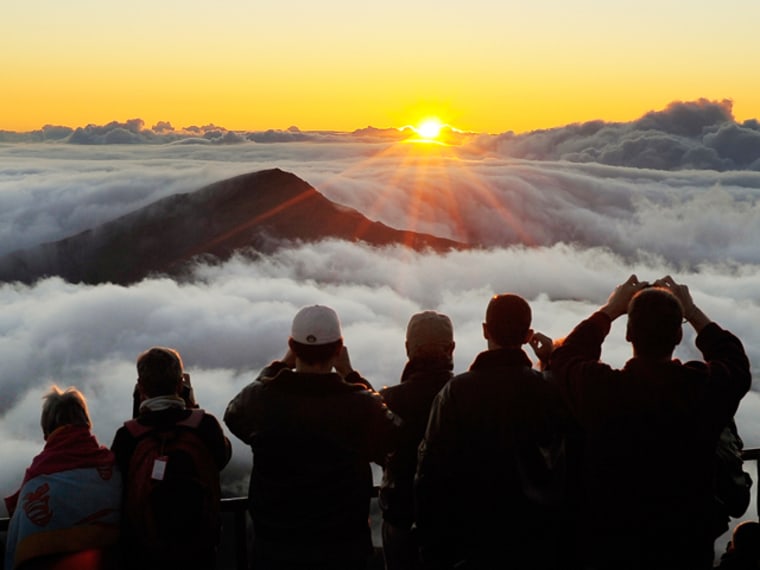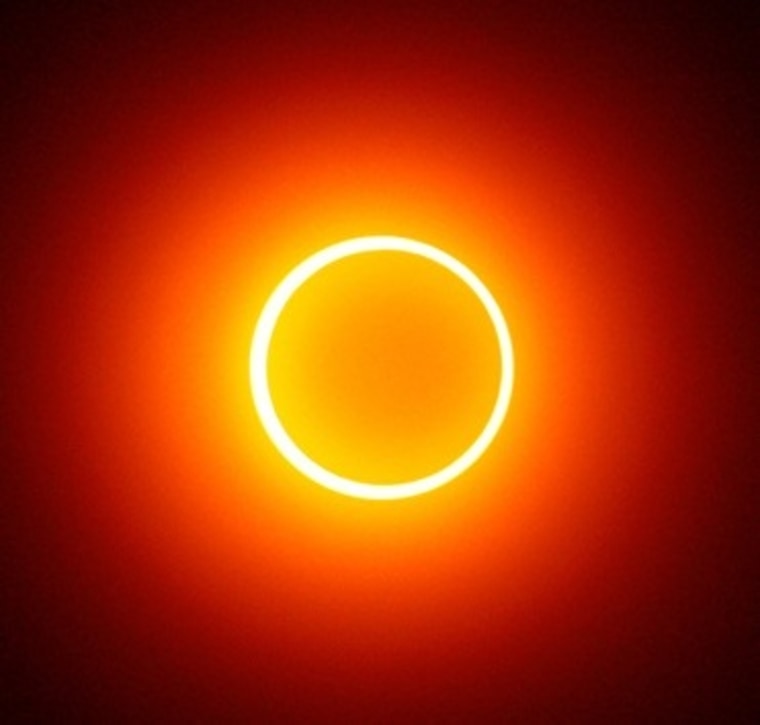Visitors to America’s national parks are used to seeing impressive displays of nature, but this weekend, some may be in for a special treat.
On Sunday, weather permitting, visitors to select parks from Northern California to central New Mexico will be able to see the moon pass in front of the sun in such a way that it creates an annular, or ring-shaped, eclipse. It’s the first time in 18 years that this type of eclipse has been seen in the continental U.S.
Share your eclipse 2012 photos with PhotoBlog
“It’s uncommon to have a total or annular eclipse cross your favorite continent,” said Chad Moore, manager of the Night Skies Program for the National Park Service (NPS). “With this one, there are 33 parks in the path of the annularity, six of which are smack dab in the middle of it.”
For those six — Canyon de Chelly, Glen Canyon, Lassen, Petroglyph, Redwood and Zion — the moon will be centered on and cover roughly 95 percent of the sun, creating a perfect “ring of fire.” The other 27 will also experience annularity but the ring will be slightly lopsided.
Another 125 parks from Alaska to Michigan may experience a partial eclipse based on weather and their distance from the event path. (For more information, including maps and events, visit the National Park Service's eclipse page.)

Wherever you choose to view it, experts advise against looking at or taking photos of the eclipse directly as it can damage both eyes and cameras. Many parks within the path of the annularity will be selling disposable eclipse glasses for $2–$3; solar filters for optical gear are available online and in camera stores.
By all accounts, this event should be one for the ages, especially for those experiencing the full annularity.
“It’s the whole earth-sun connection,” said Tyler Nordgren, a physics professor at the University of Redlands. “We’re all solar-powered. We depend on the sun for life and energy so it’s important to pay attention to it.”
Related: Where and how to see the solar eclipse
If that sounds appealing, here are five parks that are hosting events where you can do just that:
Lassen Volcanic National Park
With Redwood National Park prone to fog, this park in Northern California may be the first NPS unit to experience a perfect ring of fire as the eclipse races across the western U.S. A special astronomy program will be held at the Kohm Yah-mah-nee Visitor Center from 3 to 4 p.m., followed by ranger-led viewing of the eclipse at the Devastated Area and Bumpass Hell areas of the park.
Bryce Canyon National Park
The ring may look slightly off-kilter — Bryce is just off the centerline — but the eclipse is still expected to draw thousands of visitors as it coincides with the park’s 12th Annual Astronomy Festival (May 17–20). In addition to eclipse viewing on Sunday, there will be daily and evening programs dedicated to stargazing, rocket building and the science, history and mythology of astronomy.
Grand Canyon National Park
As at Bryce, the ring will be somewhat lopsided but Grand Canyon is still a worthwhile option as it has the space and facilities to handle larger crowds. The center of activities in the park will be the more-accessible South Rim, where visitors can attend presentations by NASA scientists before the eclipse and a public star party with free telescope viewing afterward.
Glen Canyon National Recreation Area
Like Lassen, Glen Canyon sits smack dab on the eclipse centerline although the event won’t last as long as the sun will be closer to setting. Perhaps to compensate, the park is holding a four-day festival featuring stargazing sessions and presentations by astronomers. For the eclipse itself, the best viewing will be from the Wahweap Overlook.
Chaco Culture National Historical Park
Sitting on the centerline of the eclipse, this small park in northwestern New Mexico was also a center of ancestral Pueblan (Anasazi) culture between 850 and 1250 A.D., a culture, says Nordgren, that paid intense attention to the movement of the sun.
In fact, that’s where he intends to watch the eclipse, participating in an event at the park’s Pueblo Bonito ruin. “To be in the middle of one of those buildings during the eclipse,” he told msnbc.com, “should be just awe-inspiring.”
Where do you plan to watch the solar eclipse? Tell us on Facebook.
Rob Lovitt is a longtime travel writer who still believes the journey is as important as the destination. Follow him at Twitter.
More on Itineraries
